The Dry Valleys of Antarctica (located within Victoria Land west of McMurdo Sound) get almost no snowfall, and except for a few steep rocks they are the only continental part of Antarctica devoid of ice. The terrain looks like something not of this Earth; the valley floor occasionally contains a perennially frozen lake with ice several meters thick. Under the ice, in the extremely salty water live mysterious simple organisms, a subject of on-going research.
Victoria Valley, Wright Valley and Taylor Valley.


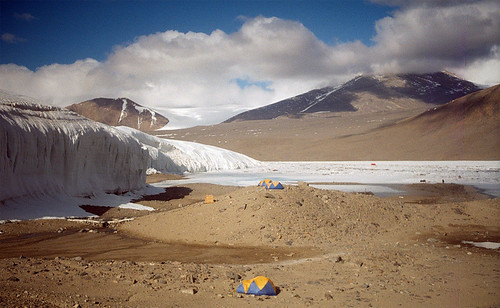
Image credit: Peter West, National Science Foundation
Recent Washington Post interactive presentation
(featuring photography by George Steinmetz) reveals this stark but beautiful terrain like never before - in some places weirdly similar to Martian landscape:
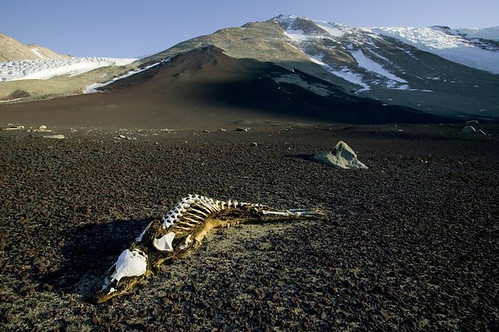
Looking like something out of Lovecraft's ("Mountains of Madness") imagination, this is actually a dried skeleton of a seal.
Lake Vanda in Wright Valley, with extremely salty water underneath thick layer of incredibly clear ice:

Taylor Valley: Powerful "katabatic" winds erode the rocks on the bottom of the valley into marvelous shapes. Such wind-sculpted rocks are called "ventifacts":
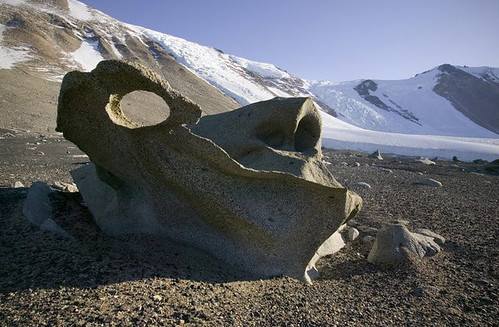
Photos by George Steinmetz
Compare the above image with Easter Island Statues:

(thanks to m3ch for pointing this out)
For more images from this series, click here
Another good article shows more wind-carved "ventifacts":
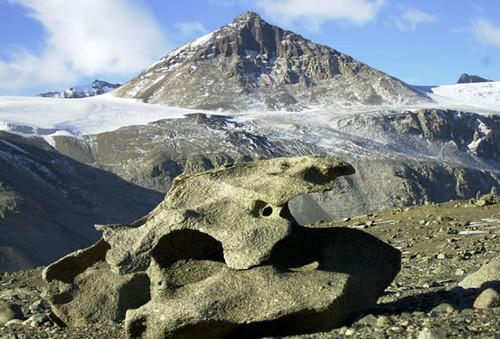
Photo by Kristan Hutchison
Canada Glacier on the edge of Lake Fryxell:
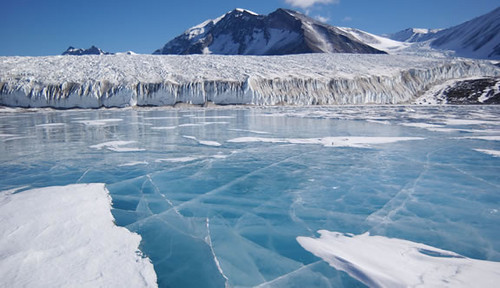
Photo by Joe Mastroianni
Volcanic Fumaroles of Mount Erebus
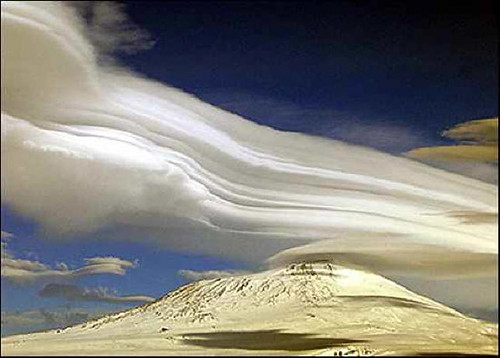
Lenticular clouds hover over Mount Erebus volcano (US Coast Guard photo)
Mount Erebus (3,794 meters), Ross Island, is the most active volcano in Antarctica, which also contains "persistent" lava lake, one of a very few long-lived lava lakes in the world - clearly visible from space:

Steaming ice "fumaroles" (volcanic gas vents) surround the crater, in time turning into surreal ice towers:

Shinkansen "Bullet Trains" of Japan
One of the technological icons of modern Japan - "Bullet Trains" (or Shin-Kansen) are capable of super high-speeds with the usual speed of "just" 300 km/h. With the names like "Light", "Hope" and "Skylark" they swoop around Japanese countryside as an extensive rail network, partly described on this site.
Looking more like supersonic jets than trains, with cool futuristic, slightly sinister forms, they represent the latest in train design and comfort.



(photo by Gary Hymes)
JR 800 is the Latest Machine - Does it go to the Asteroid Belt as well?



(these and following images via)
"In 1964 the first Shinkansen, the Tokaido Line, opened between Tokyo and Osaka, paralleling the renowned Tokaido Road that had linked Edo (Tokyo) and Kyoto in samurai times." Here is somewhat older model:

Experimental WIN 350 train:

JR E3:

JR E4:

"Each line has its own name (Tokaido, Tohoku etc.), and each type of train is identified by a name (Nozomi, Hikari etc.). In the almost 40 years since it opened, the Shinkansen network has carried over 6 billion passengers without a single major accident. The Shinkansen network also boasts very high frequency. For example, at least six trains per hour (not per day!) operate between Tokyo and Shin-Osaka Stations during daytime hours."
JR 300:




"Hikari meaning 'light,' was the original Shinkansen service on the Tokaido/Sanyo Line. Since the introduction of the Nozomi trains, it now serves as the mid-level service making a few more stops, but still traveling very fast. Hikari trains link Tokyo and Osaka in about three hours."
JR 500 variation:

JR 500:


Photo by Nick Coutts


Photo by Dean Chamberland
"Meaning 'hope,' the Nozomi trains take only about 2.5 hours between Tokyo and Osaka, and roughly 5 hours from Tokyo all the way to the southern end of the island at Hakata (Fukuoka)". The high-speed rail network of Japan is commercially justified by very high population density of these areas, even though each train can cost up to $40 million US dollars.


Images credit denshaotaku365

Image credit Jugem
Storm Trooper's Special:

Blue trains over blue landscapes:


Other image source: www.hikejapan.com
For more pictures and comprehensive model catalog, click here
____________
FRENCH NEW RAIL SPEED RECORD
You probably heard about French beating previous train speed record of 515 km/h with the new TGV-based train V-150 with a supercharged engine and extra-wide wheels. New record is 574.8 km/h. Way to go, France! Next record-beating train will just soar into the air, grow some wings and fly across to England, or even overseas :)
Check out the offical record site, it has a better quality video.


Images credit: Alstom Transport / design and Styling

Image credit: Alstom Transport / P. Sautelet



Photos by Trains-en-voyage.com

Photo by jb0057
----------------------
I had an opportunity to take a TGV train from Paris to Cote D'Azur, and can testify how smooth and classy these are.
Some of my shots of the train and from the window:


(images credit: Avi Abrams)
From Brussels to Paris we took another high-speed line - "Thalys", which was even more comfortable:


(images credit: Avi Abrams)
Europe has some outstanding transportation design (many Japanese Shinkansen trains were designed in Germany). We saw lots of cool trains; here is one on Munich-Fussen line... at Sargans in Austria:

(images credit: Avi Abrams)
By the way, Austrian QBB plans the High Speed prototype of its own:

... and the view out of the windows is not bad either:

No comments:
Post a Comment